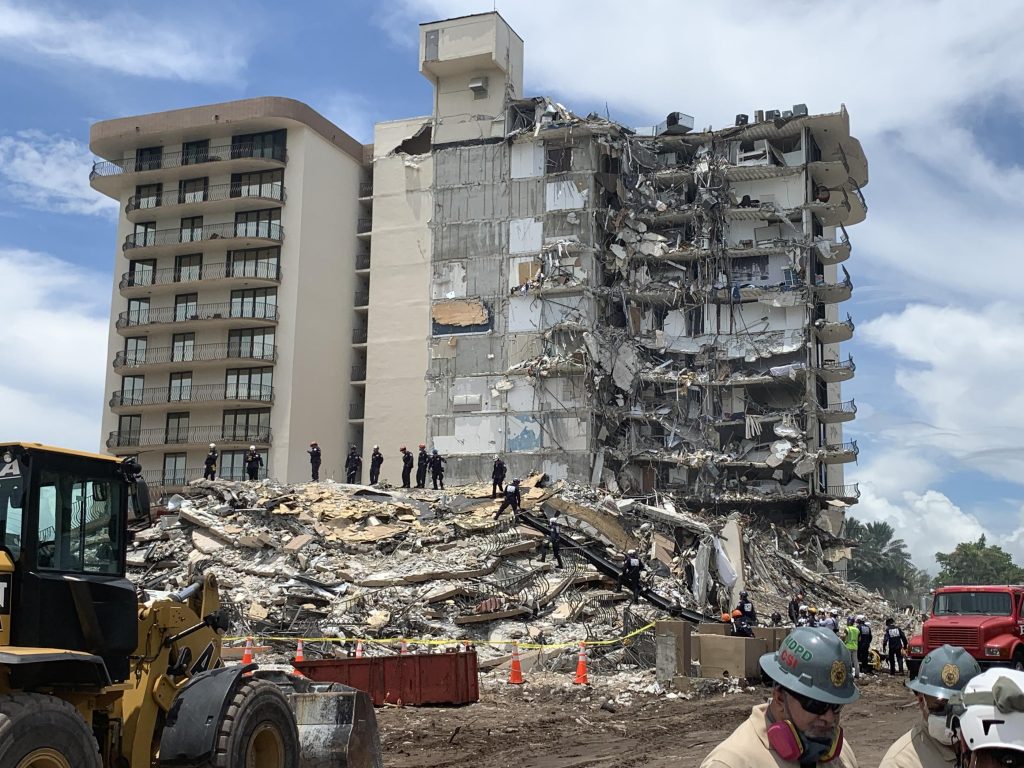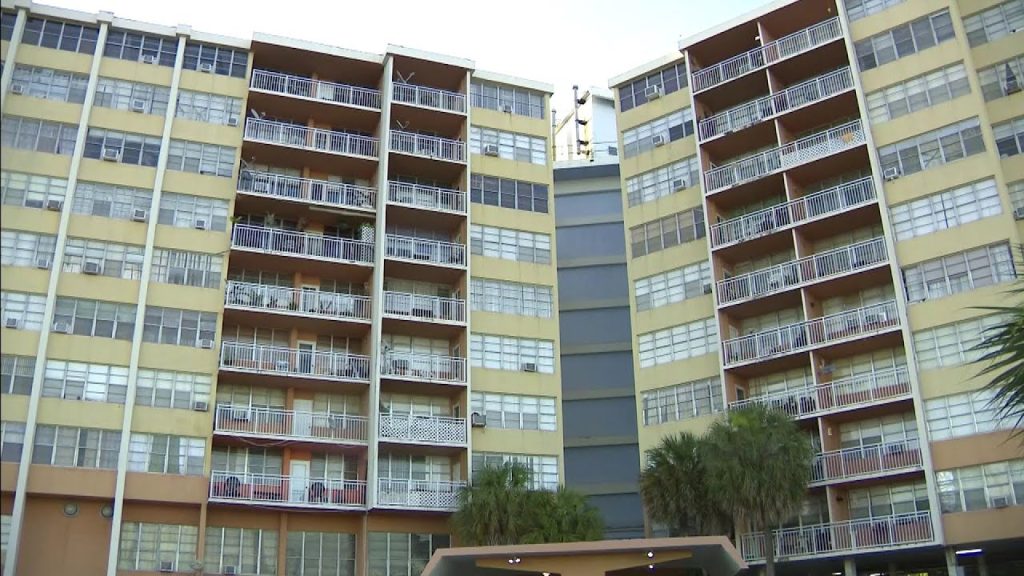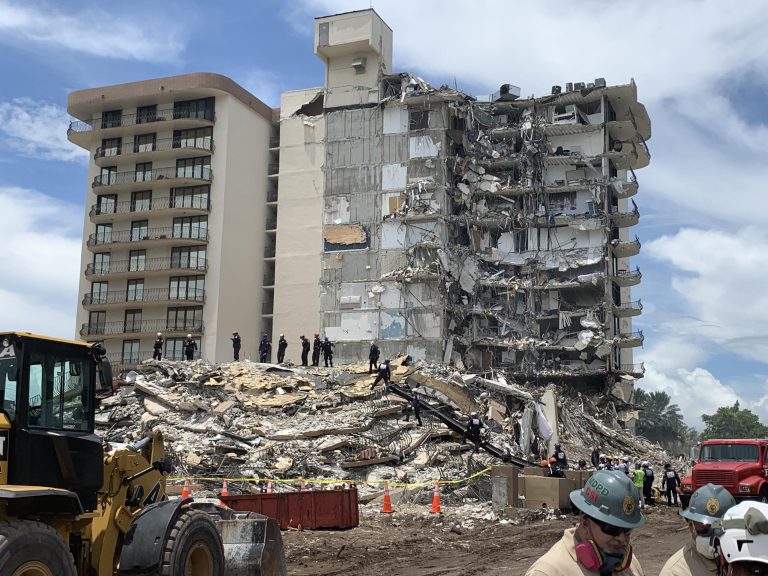Condominiums in Crisis
At more than 1.5 million Condominium units, Florida has more Condominium units than any other state in the nation. As many of those Condominium units are housed within buildings built in the 1960s, 1970s, 1980s and 1990s, we find ourselves in the unchartered territory of having to address a new era of aging buildings. Identifying problems, making timely repairs, and ensuring proper building maintenance, is imperative to the structural integrity of those buildings and the life-safety of their residents. However, repairs and maintenance cost money – a lot of money and ensuring that a Condominium has adequate financial resources for proper building repairs and maintenance requires planning. Unfortunately, this is an area in which many Condominiums in Florida, and perhaps, throughout the nation, have fallen woefully short. Making matters worse, the real estate and financial events of the last two decades have fostered an environment in which building repairs and maintenance took a back seat to a primary goal of keeping Condominium budgets and resulting maintenance assessments consistently low. The unfortunate result today is that many Condominiums find their buildings in an accelerated state of disrepair and lacking adequate financial resources for necessary and potentially life-saving repairs and preventative building maintenance. Even more unfortunate, this stark realization comes at a great cost.
Tragedy Triggers a Call to Action
News of the tragic and deadly collapse of Champlain Towers South Condominium in Surfside, Florida, in the early morning hours of June 24th, 2021, spread quickly throughout the state, country and across the globe. Many worldwide questioned how such a disaster could ever happen. Closer to home, amidst feelings of shock, mourning and sadness, Condominium owners, tenants, residents, and Board Members throughout the state began to question the structural integrity and overall safety of their own Condominium buildings. This heartbreaking event understandably places a renewed and long-overdue focus upon structural safety and routine maintenance of Condominium buildings. For many Condominium Board Members, the tragedy has served as a call to action in terms of identifying and addressing repair and maintenance issues that were postponed in the past due to funding concerns. Succumbing to pressure to keep budgets and maintenance assessments low, and not to impose any special assessments upon the membership, up until now, Condominium Boards followed in the footprints of their predecessors – maintaining underfunded budgets and as a consequence, delaying repair projects. In fairness, postponing potentially critical repairs was not ill-intentioned, but rather, was the result of a 20+ year history of events that had culminated in a mindset among the members of the Condominiums responsible for electing those Board Members that buildings could operate on bare-bones budgets and band-aid repairs.

A Tale of Twenty Years…
During the period of 2001 through 2005, the United States, and particularly, Florida, experienced a housing bubble. During that period, interest rates fell, and mortgage denial rates also fell as banks and other lenders set aside their traditional loan qualification standards and instead, relied heavily on the ability to securitize and repackage subprime loans. In addition, several government programs were established to assist with and promote homeownership. As a result, the housing market in Florida was expanding at a record pace. So much so, that there was a resulting shortage of properties available for sale.
In addition to the construction of new Condominium buildings, in response to the continuing shortage of saleable Condominiums in Florida, apartment complex owners took advantage of the booming market conditions by selling their apartment complexes, at top dollar, to conversion developers – resulting in the conversion of both newer and older apartment building complexes into Condominium Associations. Many of these converted complexes were already in need of maintenance and repair. However, after being purchased largely by first-time homeowners with little to no money down and/or with short-term, favorable, adjustable-rate mortgages, and at purchase prices that reflected increases in excess of 25% of the prior year’s valuation, many of these ready-made Condominium Associations already lacked significant resources for necessary maintenance and repairs following conversion.
By late 2005, the housing bubble began to burst. Interest rates were consistently raised by the Federal Reserve to stem inflation. As a result, the rates on short-term adjustable-rate mortgages increased and many unit owners experienced huge increases in monthly mortgage payments. Many Condominium buildings began to feel the effects of the market turn, and their volunteer Boards of Directors postponed items of regular maintenance in an effort to keep Condominium budgets and resulting maintenance assessments low. The mentality that minor repairs and maintenance could be delayed until financial conditions improved turned out to be flawed, as financial conditions did not improve, and neglected minor repairs and maintenance gave way to the need for much more costly major repairs and replacements.
Making matters worse, Florida endured what was at that time, the most active Atlantic Hurricane Season on record, which included Hurricanes Katrina and Wilma, both wreaking havoc and resulting in significant damage to many Florida Condominium buildings, as well as unit values. As many of the Condominiums damaged by these storms had at best inadequate reserves, they lacked funds to meet insurance deductibles and/or to fund necessary repairs to the property while awaiting insurance proceeds. As a result, many Condominium Boards found themselves in the unenviable position of having to levy special assessments for emergency repairs. This added financial pressure in an already downturned housing market resulted in many properties falling into positions of negative equity. Unfortunately, many owners who simply could not bear the increasing financial burden fell into foreclosure. In addition, owners who had purchased Condominiums in the housing bubble as investment properties and now found themselves in negative equity situations chose to walk away from those properties resulting in an increasing number of strategic foreclosure situations.
By the end of 2006, more than 1.25 million foreclosures had been filed nationwide for the year – a number that would continue to increase significantly for the next few years. Banks and Courts alike struggled to keep up with the increasing foreclosure load. In addition to the foregoing, 2008 saw a downturn in the stock market that was fueled by skyrocketing default and foreclosure rates. By the year end 2009, nearly 4 million foreclosures were filed for the year, and more than 2.2 percent of all households nationwide were in some stage of foreclosure.
By that time, Condominium Associations faced huge deficits created by non-paying owners. Moreover, added financial pressure was placed upon paying owners who were left to bear the financial burden of non-paying owners. As a result, many Condominiums lacked sufficient financial resources to meet their day-to-day operating expenses, let alone to perform ordinary, preventative, or even necessary maintenance to the buildings. Consequently, many Condominiums continued to lack even minimal maintenance, and many fell into a state of disrepair.
Beginning in 2010, there was an increase of investors who entered the market with the assistance of legislation under the Distressed Condominium Relief Act, which encouraged the bulk acquisition of fractured Condominium projects by protecting the acquiring investor from significant liabilities which might otherwise have been inherited from the developer. This legislation opened the window for investors to purchase highly undervalued units without liability concerns relating to statutory warranties, unfunded reserves, past due assessments or deficit funding obligations. In addition to bulk buyers, there was an increase in investor purchasers who took advantage of purchasing distressed units being unloaded by the financial institutions, post foreclosure, at low market rates for purposes of flipping the units at a later time, or utilizing the units as rental properties.
In the years that followed, the housing market began to slowly rebound. However, Condominium owners had become firmly entrenched in the mindset of maintaining underfunded budgets, and waiving statutorily mandated reserves for deferred maintenance in order to keep maintenance assessments low. So, why is it that the Boards of Directors that are charged with the duties and obligations of operating and maintaining these Condominiums do not simply adopt budgets and implement reserves that are sufficient to properly maintain the buildings?

A Business of Neighbors
A Condominium Association is a business, but unlike other business corporations, it is a business of neighbors. Although the average Condominium Association in Florida has revenue that far exceeds that of the average small business in Florida, many decisions in a Condominium are often heavily influenced by the potential short-term financial impact upon residents, instead of the overall long-term structural and financial viability of the Condominium. Volunteer Condominium Boards of Directors are often comprised of laypeople, who carry the significant burden of not only identifying and planning for repairs, but for obtaining the funds necessary to finance those repairs. They face the challenge of finding a way to fund repair projects while understanding that raising maintenance assessments or levying special assessments will not only place a financial burden on the unit owners (including themselves) but will likely have a negative impact upon their chances of maintaining their Board of Director seats in future elections.
In fact, many Board candidates successfully run for election to the Board of Directors on platforms that include a promise to lower or at least not to raise assessments or impose special assessments. In what is certain to have a long-term negative effect on the overall health of a Condominium building, many of the Board Members who run on these short-sighted and misguided platforms not only get elected and keep their promise but are re-elected and continue to keep that promise year after year. In the absence of even minimal inflationary budget increases, how could there ever be funds sufficient to perform regular and preventative maintenance of these buildings?
Reserve Funds and Financing
In addition to the failure to maintain a well-funded budget, most Condominium Associations in Florida do not maintain fully funded reserves, and many have no reserve funds at all. Many Boards of Directors do not understand that they are not obligated to present the owners with the option to fully or partially waive statutory reserves. However, if the Board does not offer the membership the option to waive reserves, it is under the obligation to fully fund reserve accounts.
Reserve accounts are often looked upon negatively by owners. This is likely due to another inaccurate, short-sighted mentality. Many owners tend to view reserves as funds that will be used to provide new or replacement items or projects in the future that they may never have the opportunity to enjoy, as they may sell their unit at some point before the reserve is utilized. However, this is a flawed view of reserve funding. Reserves may more accurately be viewed as the expense of use of the existing item, so that funds are available when the use of the item results in the need for its replacement. By way of example, if there is a reserve account for carpet replacement in the hallways, you are not paying for new carpet that you may never use but are instead paying for your use of the existing carpet that will require replacement at a future date as a result of that use.
Maintaining adequately funded reserve accounts not only creates a more financially secure Condominium Association that is more readily able to perform routine and even preventative maintenance on its building(s), but also creates a more credit-worthy Association in the event that additional funds are needed for unforeseen or emergency repairs.
Since the tragic collapse of Champlain Towers South, legislative changes have begun to focus on building maintenance and mandatory reserve funding. In addition to statutory reform that includes more stringent oversight of the maintenance of structural building components and reserves, the devastating events in Surfside have resulted in even stricter criteria for obtaining loans from conventional lenders. Up until now, conventional lenders looked largely upon financial criteria when underwriting/qualifying loans to Condominium Associations. However, the condition of structural components and building maintenance history now weighs more heavily in the underwriting process. This means that older buildings without a solid maintenance record may not be able to secure funding through conventional lenders, especially if those buildings also carry unit owner delinquencies.
A Brighter Future and New Approach to Financing
With the concept of Condominiums in Florida approaching the sixty-year mark, many of the Condominium buildings in Florida are, simply stated, aging. In order to combat the effects of aging on these structures, significant repairs are needed to maintain structural integrity. As Condominium buildings reach important age milestones, and have endured not only time, but the unyielding weather elements unique to the Florida peninsula, it is more important than ever that these buildings are properly funded, maintained and repaired to ensure a brighter future and the long-term safety and well-being of all residents.
As many Condominiums turn their focus to the immediate need to rectify the accelerated state of disrepair of their buildings, they are faced with the challenge of identifying funding sources that will not unduly burden their members. With special assessments likely to prove particularly burdensome to members given the likelihood of need for large-dollar projects over a relatively short period of time, other funding sources are needed.
Conventional loans from banking institutions are a viable alternative to special assessments in that they provide a vehicle for funding large-dollar projects, while allowing repayment over an extended period of time. However, conventional loans through banking institutions are not typically available to Associations with moderate to large delinquency rates, and will likely not be readily available to Condominiums with poor maintenance histories in light of the recent tragedy.
Luckily, special assessments and conventional lending are not the only funding options available to Condominium Associations on the Condo Blacklist. Private lending options are available to Condominiums that do not otherwise qualify for conventional lending, and can provide funds to make necessary repairs, perform required maintenance or even to jumpstart reserve funding. The Sponsors at Katzman Chandler, PA., can assist in pairing Condominium Associations in need of funding, with private lenders capable of offering that funding. Please visit the “Contact Us” page and reach out to learn more about funding options available to your Community, and to receive your free, no obligation, funding assessment.




